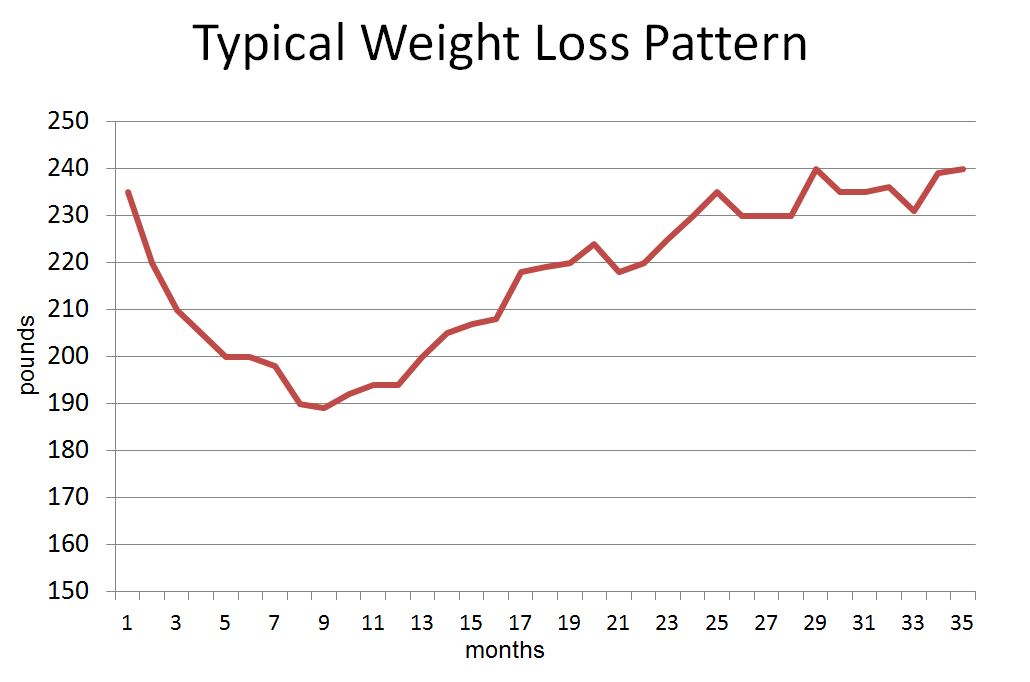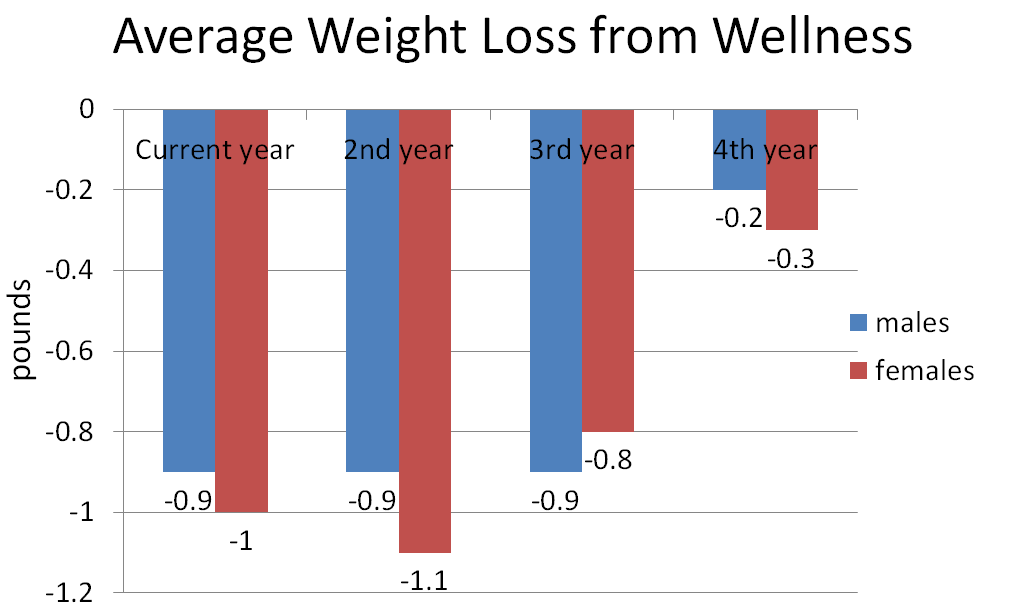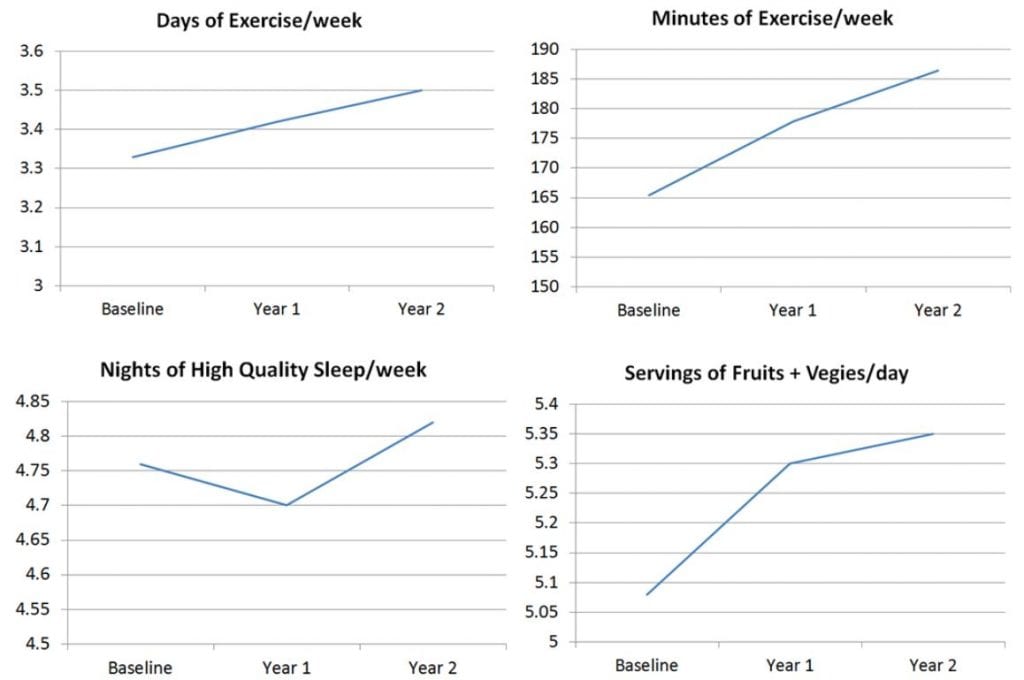To have any effect on the bottom line, employee health and wellness programs need to be able to improve employee health behaviors.
But, without improvements in nutrition, physical activity, controlling stress, and other health behaviors, most of the chronic diseases employees experience will not be prevented and your wellness program results will suffer.
Purpose of Employee Health and Wellness Programs?
In a way, worksite health programs are really just health interventions. These interventions are designed to help employees and their spouses adopt and maintain healthy behaviors.

Most employee health and wellness programs are really good at helping people get started. But after a little while we get distracted or busy or fail to see improvements and we go back to our old ways. For most people new, healthy behaviors don’t persist.
A technical term for this is healthy behavior decay – which can really bloat the cost of employee health plans.
The Risks of a Poor Employee Wellbeing Strategy
But, maintaining healthy behaviors is really hard to do. Take weight loss, for example. The graph below shows what typically happens for most people. They decide to lose weight and using diet and exercise; just about everybody is successful in the beginning. They have adopted the healthy behaviors that are required to reach a healthy weight. Further, as hard as it is to lose weight, it’s even harder to keep the weight off.

As this graph shows, over time the healthy behaviors that led to the weight loss are discarded. Unfortunately, most people gradually go back to their old habits. Not surprisingly, the weight comes back.
This is the way it happens with most people. In fact, after two years the majority of people are at or above their original weight. The challenge with weight loss and the challenge with all the other healthy lifestyles is to adopt AND maintain healthy behaviors. The same is true of lifestyle changes made in employee health and wellness programs.
Why It Can Be Difficult to Improve Employee Health?
Sticking to healthy habits isn’t always easy, whether it’s about eating well, avoiding tobacco, managing stress, staying active, or adopting any new healthy habit. Failure to maintain healthy behaviors is common for those who are trying to be healthy.
Humans tend to stick to what we know, making change a bit of a challenge. This struggle to maintain healthy routines is a big reason why many employee health programs struggle to make a lasting impact.
Apart from our natural resistance to change, there are other obstacles in our way when it comes to embracing healthier habits. Trends worldwide suggest that factors like sedentary lifestyles and the prevalence of processed foods, especially in Western culture, make it tricky to make healthy choices.
Despite efforts to promote employee well-being, issues like diabetes and obesity are still on the rise. Given these challenges, it might seem more practical to focus on preventing things from getting worse.
In other words, instead of aiming for significant improvements, just stopping things from deteriorating could be seen as progress. While this approach might prevent an increase in healthcare costs, it might not lead to noticeable improvements in health either.

What is the Goal of a Staff Health and Wellbeing Strategy?
Not getting worse could be a worthy goal for any employee health and wellness programs. But, if we can just get employees to stop gaining weight, we would be making progress.
Problems With Wellness Programs
One common challenge that nearly all employee health and wellness programs face is helping employees achieve and maintain a healthy weight. Over the past three decades, after evaluating numerous programs, it has become evident that getting large groups of employees to reach and sustain a healthy body weight is incredibly tough, if not downright impossible. The widespread issue of obesity stems from various cultural influences, making weight loss a daunting task for many.
Nevertheless, despite these hurdles, there are glimmers of hope in the outcomes of wellness programs aimed at weight loss. While statistics on workplace wellness indicate that it’s feasible to help people improve factors like blood cholesterol, blood pressure, and blood glucose levels, shedding excess weight and keeping it off remains a significant challenge.
It’s worth noting that no weight loss program has mastered this task completely. However, there’s still reason for optimism.
Recently, the RAND report showed some promising results:

If the focus of your employee health and wellness program is to help individuals reach and maintain a healthy body weight you should prepare yourself to be disappointed. The unhealthy culture that surrounds most of us makes it extremely difficult to lose weight, in fact, most people in the United States and in the industrialized world gain weight every year.
What Can Happen After Two Years of Employee Health and Wellness Programs
In the journal Health Promotion Practice, WellSteps recently published our 8th research study on the impact of our wellness solutions – and our wellness program results were optimal. In this research investigators followed almost 2,000 employee health and wellness program participants for over 2 years.
The purpose of the study was to determine if the employees were able to adopt and maintain healthy behaviors for at least 24 months. This is a tall order given the pressures that we all experience to be unhealthy.
At this worksite, not only did most employees not get worse, but they generally improved health behaviors across the two year implementation period of the employee health and wellness program. The longer they participated the better their health behaviors became. Here are a few of the wellness program results:

How Employee Health and Wellness Improved
The industry norms point at a decrease in effectiveness of employee health and wellness results in the weight loss category.
However, the wellness program results we encountered in our study indicate that optimal results are achievable with the right staff health and wellbeing programs. Notice in the graphs above that as the years went on, healthy employee habits increased.
Exercise went up from approximately 3.3 days a week to 3.5.
Minutes of exercise per week ended at over 185 from 165 in the baseline year.
The nights of quality sleep employees got took a dive in year 1 but then increased above the baseline in year 2 to above 4.8 nights.
Lastly, servings of fruits and vegetables per day increased from approximately 5.08 to 5.35.
These positive long-term results were both exciting and expected with the implementation of our WellSteps employee health and wellness programs.
Other Long Term Results of Employee Health and Wellness Programs
Since all of these employees participated in healthy eating and exercise challenges as part of the employee health and wellness program, it is to be expected that there was some impact on other behaviors.
Employees also showed long-term improvements in stress, depression, and life satisfaction. Very few of the employees smoked (just 4%). At baseline there were 77 tobacco users and after two years the number of tobacco users dropped to 66 people. That is a 13% decline in tobacco users.
Summary
Despite the cultural and social pressures we all have to be unhealthy, these employee health and wellness program participants have been able to adopt and maintain healthy behaviors for at least two years. Other published studies show that the same group was able to reduce their elevated health risks and reduce their health care costs.
If you’ve been able to have a healthy habit for two years, chances are extremely good that you’ll be able to maintain the new behavior for years to come. This is just one more bit of wellness program results to support all of the reasons why employee health and wellness programs should be a business strategy for every employer.
[maxbutton id=”1″]
Frequently Asked Questions
Are Employee Wellness Programs Effective?
Short answer is yes – long answer is it depends on the employee health and wellness program, who implements it, and the behavior change model that it follows. At WellSteps, we follow the AMSO (Awareness, Motivation, Skills, and Opportunities) model by Dr. Michael O’Donnell. It’s the only model that’s been simplified for real world use. Read more about this here.
To summarize, we follow these steps:
- Awareness & Education: ‘What’ of behavior change
- Motivation: Driver of change
- Skills & Tools: ‘How do I do this?”
- Opportunities: Environment and policy changes that enable decision making opportunities
The weight of each of these steps differ, but each plays a vital role in providing employee health and wellness programs that aren’t just a catalyst for change, but instead a builder of long term habits.
So, are employee wellness programs effective? Yes, at WellSteps we’ve proven successful health and wellness programs in the workplace exist.
What Are Some Good Examples of Health and Wellness Programs in the Workplace?
If you want to explore how to improve employee health and well-being, we have two categories of interest: Campaigns and Challenges. Each can we woven in with our solutions or delivered a la carte. What makes these two categories stand apart in terms of how they’re implemented, the wellness program results they bring in are both optimal.
Behavior Change Campaigns: Choose from a long list of personal fitness, healthy eating, healthy lifestyle, and emotional health campaigns that can produce the wellness program results you’re looking for. Campaigns include incentives, a pre-campaign webinar, reporting, the WellSteps App, and more.
Challenges: We make employee employee health and wellness activities engaging and fun with scoreboards and a little friendly competition between employees. These can be team based or individual activities and include the WellSteps App, marketing, and more.
How to Improve Employee Health and Wellbeing?
There are plenty of ways to incentivize onsite employee health and wellness. It may not seem like a science, but it is. For successful wellness program results you must follow a behavior change model that’s been proven to be effective. For us, that’s the AMSO behavior change model. It ensures that employees are aware, educated, motivated, and provided with the appropriate skills, tools, and opportunities required for success.
At WellSteps, we have wellness program results from even the most difficult behavior changes. And tit ismaintained over a long period of time – weight loss. That’s because our onsite employee health and wellness programs have been tested and perfected to achieve wellness program results that make a difference in your health care costs and employee productivity. By living healthy lives and creating healthier habits, our life satisfaction increases and our productivity goes up – as does our health!
What are Employee Health and Wellness Programs?
Employee health and wellness programs are, in short, a set of solutions, campaigns, and challenges that aim to improve employee health. Reason being, not only do corporations care about the health of their employees, but they also want to cut down on health care costs while increasing productivity.
An effective employee wellbeing strategy will involve the use of a proven behavior change model. The benefits of health and wellness programs in the workplace far outweigh the cost and provide long-lasting positive results for both employees and the employer.
